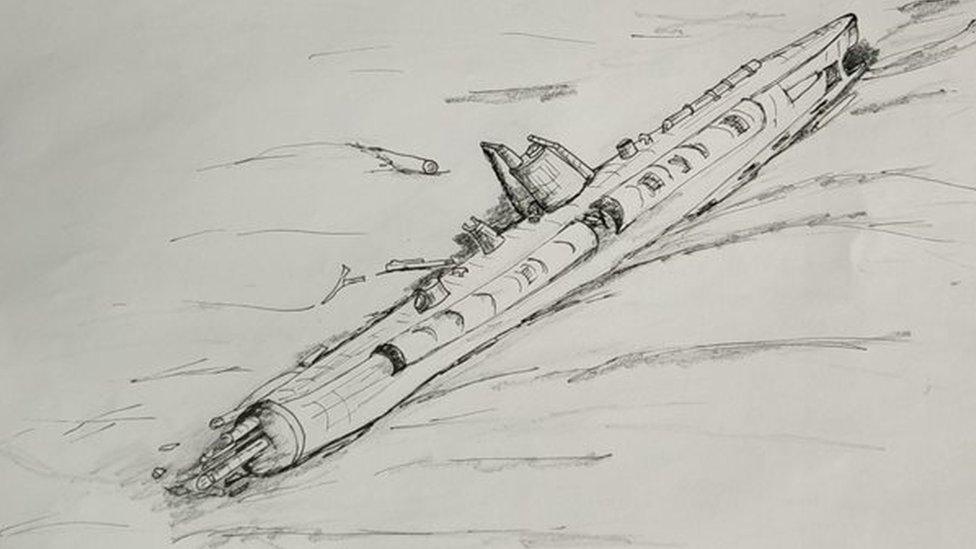German WW1 U-boat found off Belgian coast
- Published

This sketch shows the conning tower in good condition and the overall state of the submarine
The wreck of a German submarine that sank during World War One has been found in the North Sea and officials believe 23 bodies may be inside it.
The type UB-II submarine is said to be in good condition, lying at a depth of 30m (100ft) off the Belgian coast.
"The submarine is in such good condition that we reckon all the bodies are still on board," said West Flanders Governor Carl Decaluw├®.
The vessel is thought to have been sunk by a mine.
Mr Decaluw├® told reporters on Tuesday that the location of the wreck was being kept under wraps to prevent people going near it and to stop the submarine being looted or damaged.
The two periscopes appeared to be intact, judging from footage taken by divers
One unconfirmed report in Flemish media said it was near the port of Ostende.
As many as 23 bodies could be on board the sub, which is lying on its starboard side on the seabed. The German embassy has been informed.
"This sort of submarine would have had a standard crew of 22 and one commander," said Mr Decaluw├®.
Although in relatively good condition, the submarine nevertheless sustained damage to its upper side. The bow sustained the most damage but the hatches were still shut.
The location of the wreck is being kept secret to prevent it being plundered (file picture of UB-II type submarine)
The conning tower is described as intact and the periscopes are still visible. Two torpedo tubes were found lying apart from the wreck.
Scientists believe the mine may have been dragged up towards the surface as the submarine became caught up in a cable.
Eleven German submarines from the World War One period have been found in Belgian waters but this vessel is reported to be the best preserved of all.
UB-II submarines were built in 1915 and 1916 and were able to dive to a depth of around 50m.
This sketch of the wreck showed it lying on the seabed at a depth of 30m
- Published19 October 2016
- Published1 February 2017